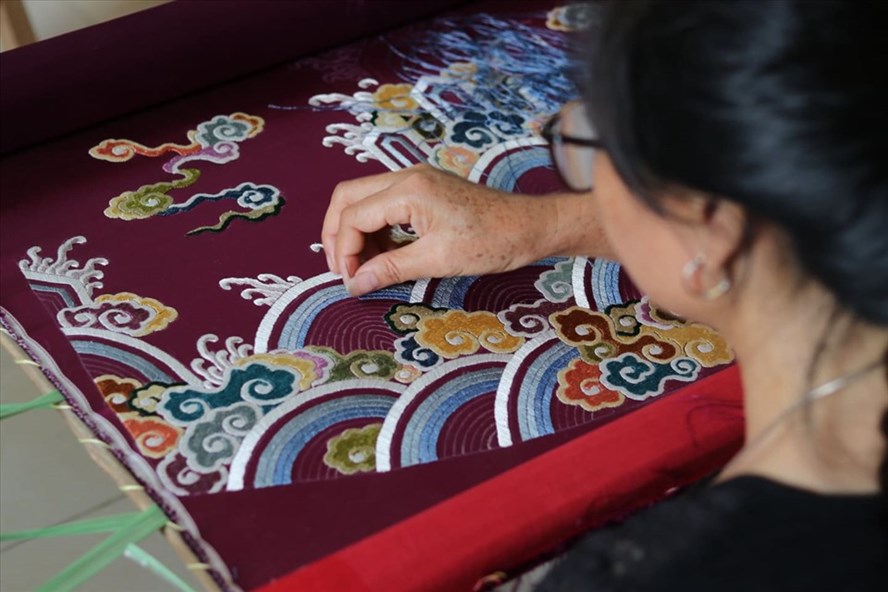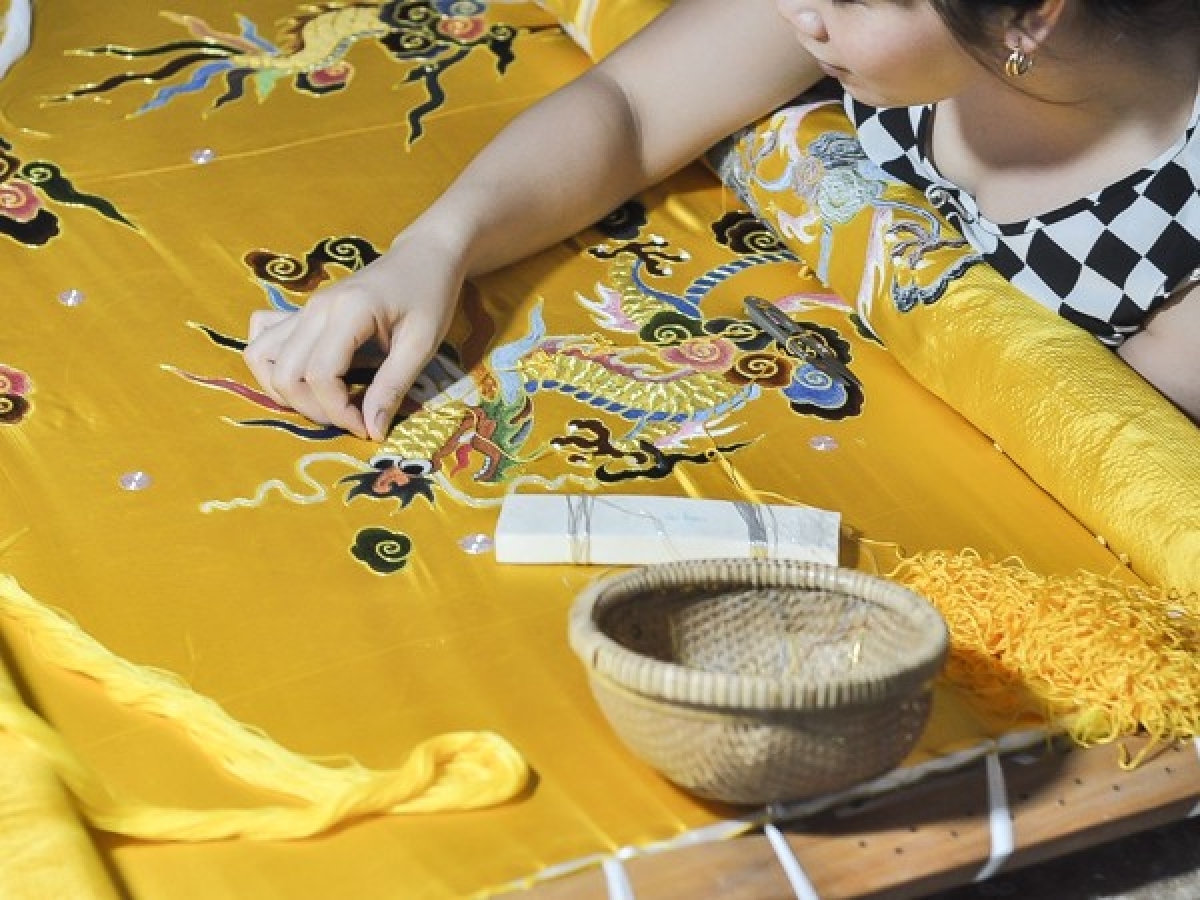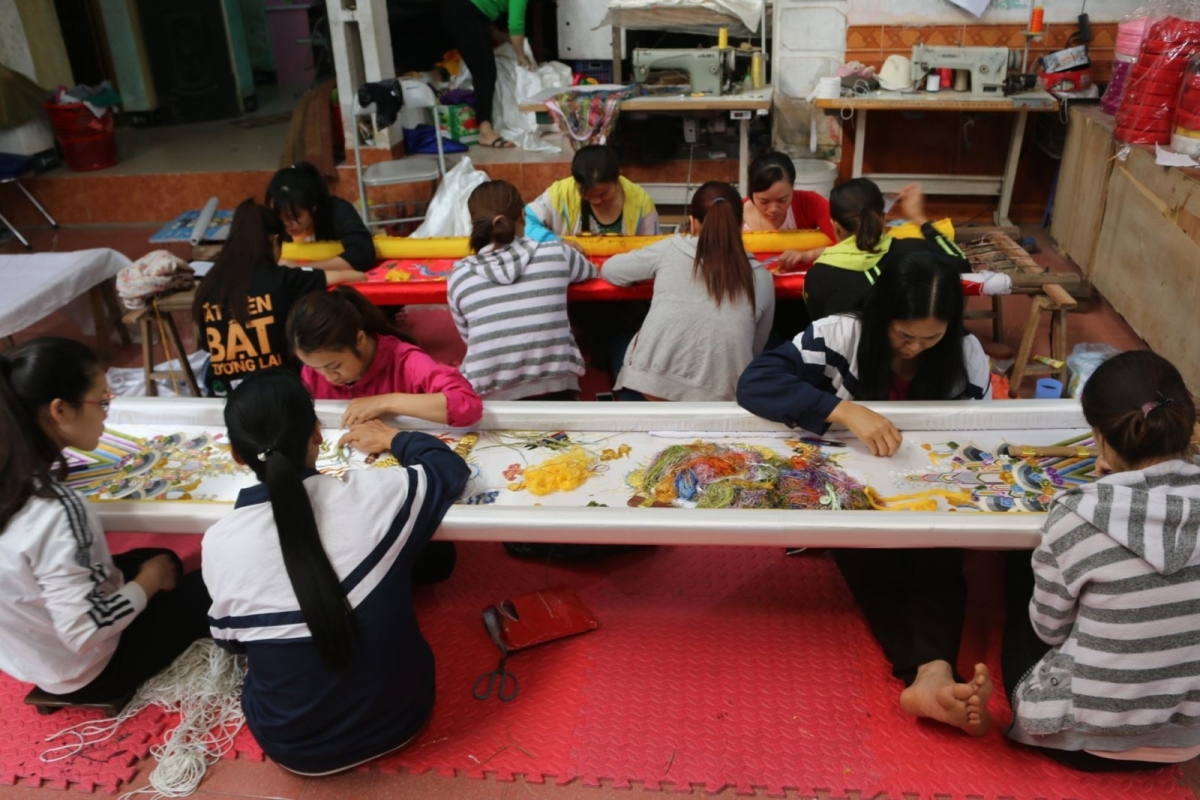(TITC) - Dong Cuu Embroidery Village located in Dung Tien Commune, Thuong Tin District, south of Ha Noi, is famous for its unique hand-embroidered products which are the royal costumes, requiring specialized skills of talented craftsmen.
From the center of Ha Noi, going to the south along Highway 1A about 15km, you get Dong Cuu Village which has been famous for its embroidery of all kind costumers since several centuries, especially the dragon robes.

Photo: Internet
Craft village history
Dong Cuu Embroidery Village has a long history. According to the village's legend and the ordinations of the Vietnamese kings, the embroidery village was formed during the reign of King Le Canh Hung (1740-1786). The village worships Mr. Le Cong Hanh (1606-1661), who was Doctor under the reign of King Le Than Tong (1637) and was regarded as an ancestor of embroidery handicraft. In the past, the village had specialized in embroidery of dragon robes, costumes for mandarins and nobles in the court and had been the only place in the North that specialized in this field.
Currently, the village remains this special embroidery craft. The products of Dong Cuu Village include mainly costumes restored according to ancient models, some objects for folk ritual festivals. All are embroidered on high quality fabric with meticulous lines, carefully simulating animals, things, flowers...

Photo: Lan Nhi
Hand embroidery technique - the strength of the craftsmen
Despite tools used in embroidery are quite simple such as: embroidery needles, embroidery frames of all sizes (round and rectangular styles), scissors, ruler, quills, chalk, different color thread and embroidery fabrics (white fabric, satin, silk), Dong Cuu embroidery has many unique techniques distinguished from other localities. With skills such as embroidering and stuffing threads at the same time, while embroidering and interweaving glitter threads, only skilled artisans in the village can create delicate patterns in their products.

Photo: VOV2
The images of phoenix, dragons, wavy leaf, flowers, moon, and clouds, etc. are arranged symmetrically on the costume, which shows both the splendor and also the rank and class in society at the feudal time. The meticulousness of Dong Cuu embroidery has been also performed in the processes such as selecting silk threads, choosing glitter threads, drawing color, creating images, printing on fabrics. With the skillful hands of Dong Cuu craftsmen, the contours become softer, gently winding, and different from other local handmade embroidery products.
Besides the difficult embroidery technique, embroiderers also have to comply with other strict regulations. Stitches must be in a certain direction.
As for the king's dragon robes, each color has five different shades, so it is necessary to use about 200 colors of embroidery thread. This is not to mention a series of special techniques used in embroidery of difficult and complex motifs.
Preserving cultural values
The embroidery handicraft requires diligence, meticulousness, sophistication and high aesthetics. The embroidery patterns for royal attire can be considered the pinnacle of traditional embroidery. The restoration of the costumes requires the craftsman to be very knowledgeable about the ancient costumes of the feudal courts before. In addition to the knowledge of the craft, the embroiderers must also be caring, love the profession with perseverance, patience and sophistication to create a product that is beautiful, meaningful and of high historical cultural value.
Although today, machine embroidery technology has been developed in many other embroidery villages, hand embroidery is still the strength in Dong Cuu.
The artisans here have constantly preserved and transmitted to successive generations to conserve the unique traditional craft. The development of embroidery has helped people stabilize their economy, create jobs, and also help people preserve and promote the strengths of the craft village. At present, Dong Cuu village has been opening regular vocational training classes for local young generation in order to preserve and promote the traditional embroidery.

Photo: VOV2
Nowadays, in the process of socio-economic development Dong Cuu village has maintained traditional embroidery craft and gradually shifted to restore traditional costumes for conservation, filmmaking and production of canopy, parasol, ritual robes... The products in Dong Cuu Village are made mainly for the purpose of displaying at museums, serving festivals, folk beliefs, contributing to preserving the national cultural identity.
Village craftsmen had researched and collected royal costumes for restoring products. They have recovered numerous dragon robes showing artistic standards according to the original ancient models. These embroidery products have been displayed in some countries around the world, while some royal costumes are on display in Hue museum.
With typical values, traditional embroidery in Dong Cuu is included in the list of national intangible cultural heritage by the Ministry of Culture, Sports and Tourism in 2016.
Dong Cuu Village becomes also an interesting tourist destination attracting many visitors, especially foreigners coming to visit.
Tourism Information Technology Center